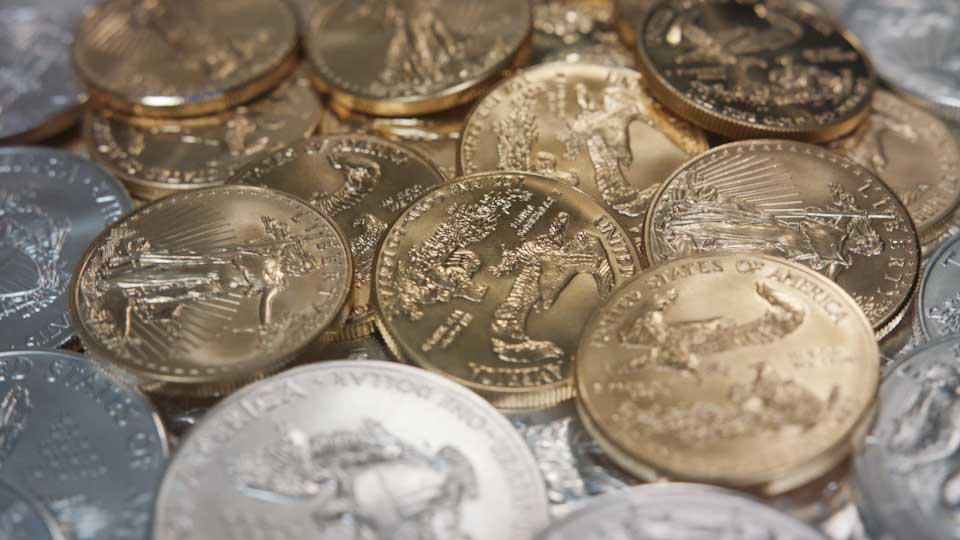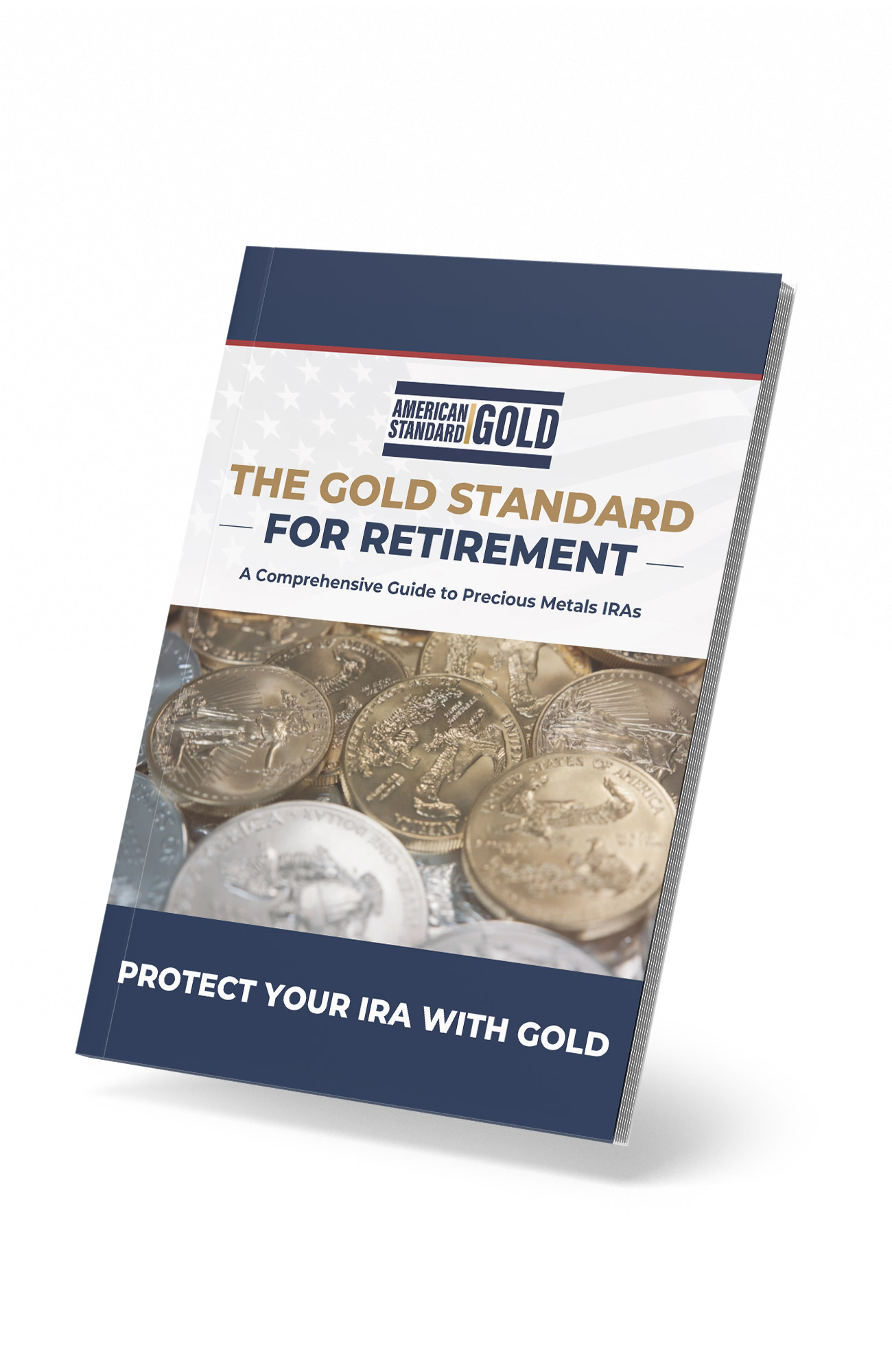Why Invest In Gold
Investing in gold offers a strategic hedge against uncertainty and inflation
Gold Has Historically Maintained Its Value
In a world where economic fluctuations are increasingly common, gold stands as a beacon of stability. This precious metal has historically maintained its value, offering a safe haven during times of market volatility and geopolitical tensions.
Moreover, gold is an effective diversifier for your investment portfolio. Its price movement often differs from stocks and bonds, reducing the risk of significant losses. As central banks and governments continue to navigate unpredictable economic landscapes, gold’s role as a secure asset becomes even more vital.
Additionally, the potential for gold’s value to increase in response to rising inflation makes it an attractive option for preserving purchasing power. With inflation concerns growing globally, gold can be a smart choice to protect your wealth.
At American Standard Gold, a leader in the Gold IRA sector, we advocate for a self-directed IRA enriched with IRS-approved gold coins, bullion, bars, and other qualified precious metal products. We firmly believe this diversification is an essential element of a robust retirement plan. Investing in gold not only strengthens your portfolio but is also a key strategy in retirement planning, offering both security and stability for your future.
Exter’s Pyramid of Liquidity
Exter’s Pyramid of Liquidity represents a unique perspective on asset hierarchy and risk. As you ascend the pyramid, assets increase in risk and decrease in liquidity, with items like derivatives and unfunded liabilities at the top. This model suggests that gold, due to its enduring value and stability, is the ultimate foundation for financial security.v
The Difference Between Physical Gold, Gold Stocks, and Gold ETFs
Investing in gold has been a preferred choice for those looking to diversify their portfolios and hedge against economic instability. However, not all gold investments are created equal. The three main ways to invest in gold are through physical gold, gold stocks, and gold Exchange Traded Funds (ETFs). Each has its unique characteristics, benefits, and risks.

Physical Gold
At American Standard Gold, we understand the unparalleled value of physical gold. Unlike other assets, gold is immune to counterparty risk, and its supply cannot be increased at the whim of central banks. For millennia, gold has proved its resilience, maintaining its worth amid inflation, market swings, political instability, and global crises.
Gold’s inverse correlation with the stock market makes it an essential diversifier. Unlike gold ETFs, which are tied to the banking system, physical gold’s value is governed by pure supply and demand dynamics, offering a more direct and stable investment option.
In today’s economic landscape, with stagnant wages, declining labor productivity, and fragile manufacturing sectors, the risk of a severe economic downturn looms large. In such a scenario, physical gold isn’t just a safe harbor; it’s an asset that may appreciate in value, offering a solid alternative currency in extreme cases.
Investing in gold is not just a choice but a strategic necessity to safeguard and potentially enhance your wealth in uncertain times. It’s about being ready for anything, especially if the markets take a nosedive. Physical gold offers the most security and flexibility, making it an ideal choice for long-term capital preservation.
Gold Stocks
In the realm of gold investing, gold stocks represent a dynamic yet distinct avenue compared to physical gold. These stocks, including mutual funds, belong to companies that are integral to the gold industry – those that produce, refine, or explore for gold. The soaring prices of precious metals since the early 2000s have significantly benefited these stocks, offering attractive returns to investors. However, it’s crucial to understand that these are not equivalent to investing in physical gold.
Investing in gold stocks means betting on a company’s profitability, which is influenced by a myriad of factors beyond gold prices alone. For instance, if operational costs increase even as gold prices rise, a gold mining company’s stock might see a decline. The value of shares in exploration companies, in particular, hinges on their efficiency and success in gold discovery.
Political risks also play a role, especially for mining companies operating in volatile regions. Case in point: the strike in South Africa that impacted AngloGold Ashanti and led to a sharp drop in its stock value.
Additionally, gold stocks exhibit more volatility compared to physical gold. They can act as leverage proxies, potentially offering greater returns or deeper losses than gold itself. This characteristic, along with their closer correlation to the stock market, can dilute the diversification benefits gold typically offers.
The 2008 financial crisis illustrated this point starkly: while physical gold maintained its value, gold stocks experienced significant losses.
For those considering gold stocks, remember that it requires in-depth research, separate from the broader gold market analysis. It’s advisable to consult with a licensed securities professional to navigate this complex and speculative field effectively. Investing in gold stocks can be rewarding, but it demands a strategic approach and a clear understanding of the risks and variables at play.

ETF
Exchange-Traded Funds (ETFs), particularly those tracking gold, have become a significant part of the investment landscape. Like mutual funds, gold ETFs, such as the well-known SPDR Gold Shares Exchange Traded Fund (“GLD”), aggregate various gold assets, from mining company stocks to actual gold reserves.
Contrary to popular belief, GLD isn’t backed solely by gold; it also includes cash holdings. The gold supporting this ETF is securely stored in the HSBC vault in London. Investment in ETFs has soared, highlighting their popularity in modern finance.
Here’s where it gets interesting. ETFs are great for quick trading. You can jump in and out of the market fast. Plus, you’re in the gold game without actually holding any gold.
But, there are crucial aspects to consider:
- No Physical Gold Ownership: When you invest in a Gold ETF, you don’t actually own physical gold. Instead, you own shares in a fund that represents gold. There’s no option for the typical investor to redeem these shares for physical gold.
- Counterparty Risk: Gold ETFs involve the banking system, introducing a significant counterparty risk. In contrast, physical gold owned and stored privately carries no such risk, as its value is intrinsic.
- Short-term Focus: ETFs are often used for intraday trading, which may not align with a long-term investment strategy.
- Vulnerability in Market Crashes: During severe market downturns, like the Great Recession, ETF trading can be suspended, potentially locking investors in at unfavorable prices.
- Management Fees: Owning Gold ETFs comes with ongoing management fees, which can erode the investment value over time. This contrasts with a one-time dealer premium for physical bullion.

In Conclusion
ETF shares are supposed to be backed by the physical metal. Shareholders don’t own title to the metal itself but instead are effectively entrusting their wealth to the mega-banks that serve as the primary custodian for the ETF’s bullion. With the recent collapses of giant financial institutions such as Lehman Brothers, MF Global, IndyMac and Washington Mutual this is a risk many investors are shying away from. Many credible watchdog organizations already believe the major ETFs have partially backed some shares with derivatives instead of physical metals and are engaging in hidden leases, swaps, and commingling (risks that are even listed in some of the prospectuses for the ETFs)!
On the other hand, physical gold offers a more straightforward approach. It frees investors from of ETFs or gold stocks and physical gold. For ETFs, transactions and account openings must follow the stringent reporting requirements of FINRA and the SEC. By contrast, there are potentially no reporting requirements when buying or selling physical precious metals. This lack of paperwork makes the process more private and less burdensome than investments in gold ETFs.
Ultimately, while ETFs and gold stocks might have their place for certain trading strategies, they cannot fully replicate the security and simplicity of owning physical gold and silver. This direct ownership offers a tangible asset, free from the intricacies and vulnerabilities of the broader financial system.
Simply put, ETFs and gold stocks don’t insulate you from the risks inherent in the financial system. Although they can be useful to high-frequency traders, they cannot fully replicate the security and simplicity of owning physical gold and silver.
Download Our Free IRA Guide
If you’re curious about Gold IRAs, precious metals, or seeking ways to convert or diversify your current retirement portfolio, our expertise is at your service. Discover how incorporating precious metals into your retirement accounts can safeguard and enhance your wealth.

Contact Us Today To See If You Qualify
Our IRA experts are here to help you with a free personal consultation. Secure your financial future by contacting us today!
Contact Us Today To See If You Qualify
Our IRA experts are here to help you with a free personal consultation. Secure your financial future by Contacting us today!